Breeding options for red currant cuttings
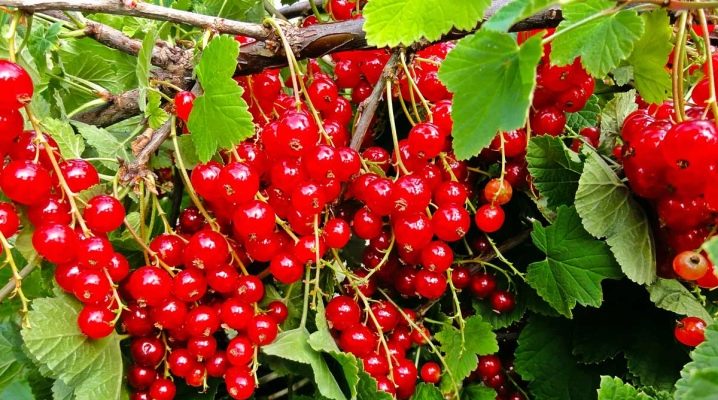
According to current statistics, red currant is one of the most popular fruiting shrubs. This plant is unpretentious, but it is important to know some of the nuances associated with its cultivation. That is why it is worth paying attention to the existing options for propagating bushes by cuttings. Most often, in practice, gardeners use the vegetative method, since the seed method is time-consuming and laborious.

Peculiarities
The yield of new bushes directly depends on how correctly the culture propagation will be carried out. At the same time, it is important to correctly prepare the planting material, and in this case we are talking about cuttings. It is also worth considering that breeding in the described way can be carried out at any time of the year.
Preparations for spring cuttings begin in the fall. This process involves cutting healthy and strong shoots, the length of which should be about 25 cm. The leaves are removed from the branches, and the cuts are covered with garden pitch. It is important that full-fledged buds are present on the shoots.
Shoots are stored until spring in a cold place. This can be a regular household refrigerator. An alternative would be to place the planting material in the yard under a thick layer of snow.
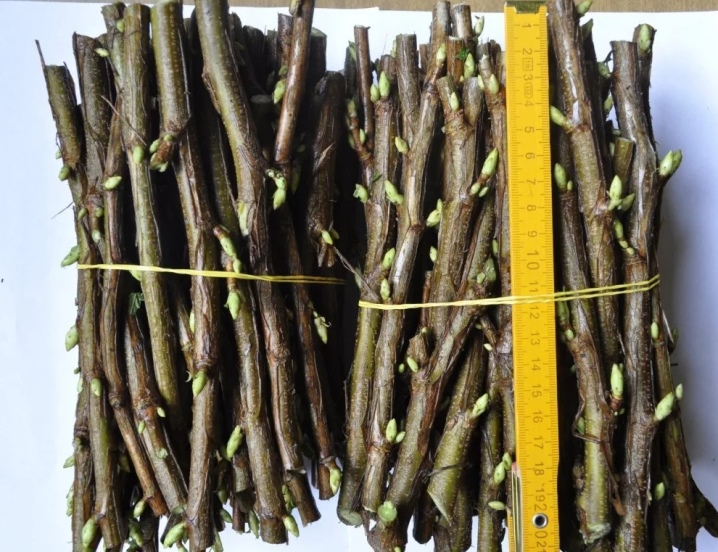
Before planting, the lower ends of the branches are cut again, treated with growth stimulants and placed in water. In spring, cuttings are planted in the ground with an interval of 0.2 m. At the same time, at least 4 buds should be underground. It should also be remembered that the rooted shoots are placed at an angle to the surface of the garden. After the young growth has germinated by 5 cm, it is transferred to a permanent place of residence.
As long-term practice has shown, the best time for carrying out the described agrotechnical measures is still autumn. This is due to the increased (up to 90%) survival rate of cuttings. In addition, we are talking about the following significant advantages:
- the ability to quickly update the berry;
- elimination of the need for transplanting bushes;
- unlimited amount of planting material;
- due to the preparation of the plant for winter in spring, the gardener receives a strong and resistant shrub to various conditions, as well as to most diseases.
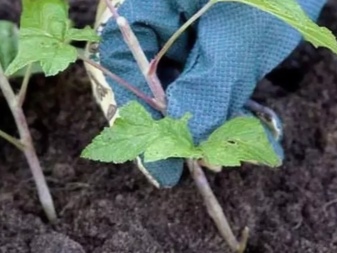
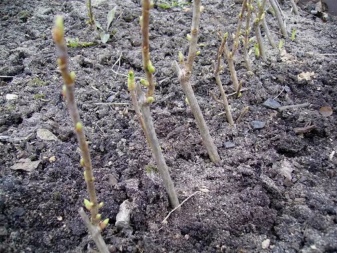
Speaking about the disadvantages of autumn cuttings, it is necessary to highlight two main points:
- the risk of freezing during abnormal frosts;
- labor intensity of the process itself.
In addition to all of the above, it should be noted that winter is the most free period for gardeners. It is at this time that it is convenient to start preparing planting material for breeding berries. As a result, by the spring, rooted and strong plants will appear on the beds, capable of bearing fruit already in the first year of life.
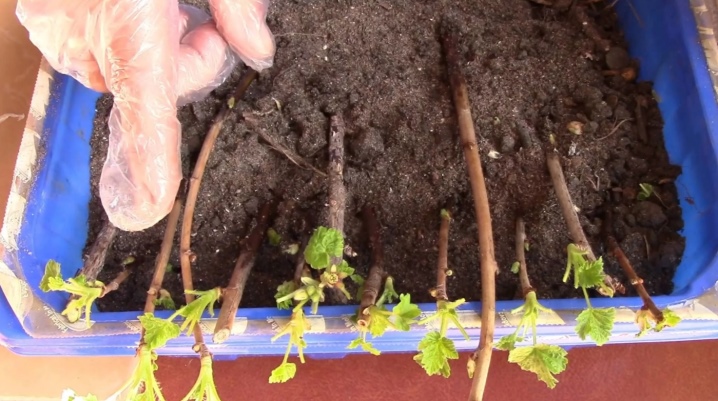
Separately, you can consider the features of winter cuttings. This refers to the implementation of certain actions at home. It is best to carry out all procedures in December. When preparing cuttings, in this case, one-year-old shoots with well-developed buds should be selected. The workpieces are cut almost at the very edge of the earth, and their length should be about 20 cm. These branches are placed in a container with water and placed in a warm place (a window sill above the heating radiator is well suited). Many experienced gardeners add sugar and even honey to their water.
In the vast majority of cases on the 25-30th day, the first elements of the future root system are already being formed... After these roots reach 5 cm in length, the cuttings are planted in pots, having previously poured expanded clay on the bottom and half filling their volume with rotted leaves. After planting, watering is required with the addition of cow dung as a top dressing. With proper care, buds will swell on the seedlings in February.
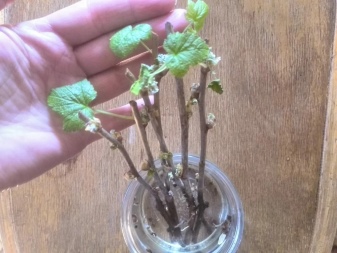
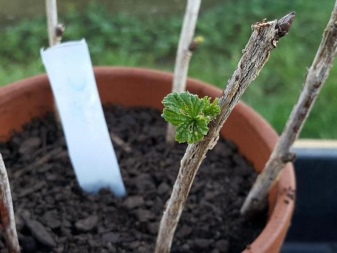
Preparing cuttings
As a result of grafting, strong young red currant bushes can be obtained in several ways. In this case, the number of new copies will be limited solely by the needs of the gardener. For reproduction of red currants, both ligneous and green shoots are equally successfully used.
It is important to pay attention to the correct cutting of the workpieces. It is necessary to choose branches that have ceased their development, as well as the strongest shoots that have sufficient thickness.
A good stock for planting material should have at least four healthy buds. The length and thickness of the cut stem must be at least 15 and 0.5 cm, respectively.
The cuts themselves are made as even as possible. Experienced gardeners recommend using a sharp knife rather than a pruner for this.

Stiffened
Many gardeners begin to prepare such cuttings in the summer, from mid-August. Preparation of woody specimens is carried out as follows:
- take exceptionally fruitful shoots that are free of defects and about 8 mm thick;
- all leaves are removed;
- shoots are divided into parts, each of which should have 5-6 buds;
- in the upper part, an even cut is made for further correct formation of the shoot;
- under the lower bud, the cut should be oblique: this approach will help future roots better absorb moisture;
- the cuttings are placed in water.
After the appearance of the root system, woody seedlings can be transferred to the ground.
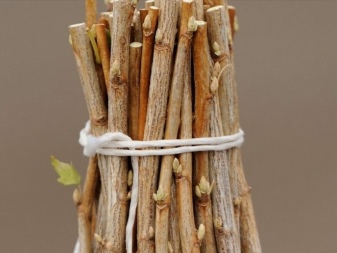
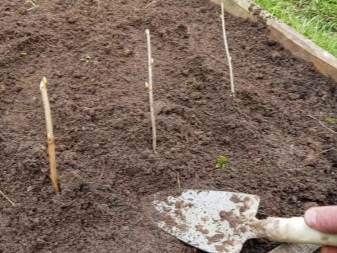
Green
This version of how to cut red currants is also common. Its main advantage is the maximum simplicity of the whole process, which even an inexperienced gardener can handle. The algorithm itself includes the following important points:
- as soon as in spring (most often in the second half of May) young shoots get stronger, they cut off 10-15 cm tops;
- all leaves, except the top ones, are removed;
- the future seedling is treated in a solution of stimulants for 12 to 24 hours;
- prepare a place in the greenhouse;
- cuttings are planted in protected ground.
One of the main conditions for growing strong planting material is air humidity and protection of cuttings from direct sunlight.
The final stage, of course, will be the planting of cuttings, which is recommended in the fall.
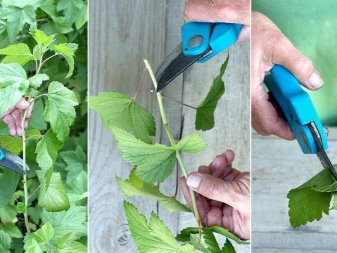

General principles of rooting
One of the key advantages of cuttings is that you can breed a berry plant, having received almost any number of young bushes during the growing season. It should also be borne in mind that it is usually very easy to root future seedlings.
Experienced gardeners begin to prepare for cuttings in early August. This approach is due to the fact that with the onset of the autumn season, the circulation of juice significantly slows down. Consequently, cuttings retain moisture better and longer, which in itself contributes to their rapid rooting. If you delay the preparation, then the process of forming the root system will be significantly slowed down.

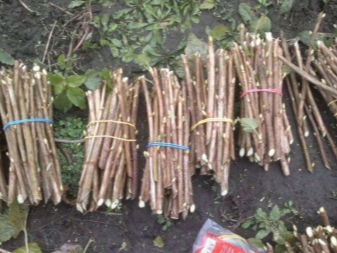
Landing
First of all, you need to pay attention to the correct choice of a site where you can plant young bushes. Here, one of the key criteria will be the characteristics of a particular variety.
If black currants are best planted in conditions of direct sunlight or partial shade, then for a red berry, hills that are well warmed up and at the same time protected from gusts of wind would be the best option.
It is recommended to place such bushes near a fence, house or other buildings at a distance of about 1.5 m.
Growing healthy, strong and well-fruiting bushes can only be done in properly prepared soil.... It is recommended to prepare holes for planting currants 2-3 weeks before transferring the cuttings to the ground. Under such conditions, the soil has time to completely settle, and most of the harmful substances come out of it. The top layer of the extracted soil is mixed with fertilizers and placed on the bottom of the hole before planting. Many gardeners in this case successfully use a mixture of compost, superphosphate and wood ash. Nitrogen fertilizing at the stage of soil preparation for currants, as a rule, is not used.

The very procedure for planting cuttings of the berry bushes in question is as follows.
- Bury the cuttings in the ground for 2-4 buds. In this case, two of them should remain on the surface. If the ground is loose, then you can do it manually. Otherwise (when the soil was not previously dug up), the depressions can be made using a rod of the appropriate diameter. But it is better to prepare the wells in advance in the above way.
- Arrange the planting material at an angle of 45 degrees to the surface of the garden, that is, diagonally.
- Fit well to water.
At the final stage, the bed with the planted cuttings is covered with polyethylene. This is true when it comes to open ground. When planting in greenhouses and greenhouses, this item is excluded, one watering will be enough.

Care
Immediately after planting, it is necessary to water the young growth and mulch. It is important to consider that in the spring it is strongly recommended to dig up the ground with a depth of 10-12 cm. The same should be done in the autumn. Another important point is that the digging depth in the row spacing should be 8-10 cm. Such agrotechnical measures have the most positive effect on the growth and development of currant bushes.
An equally important point in the regular care of the described plants is the spring application of mineral fertilizers with a high nitrogen content. In the summer months, it is best to feed currants with mullein or humus. For the autumn months, potash and phosphorus supplements will be relevant. In parallel, in the fall, wood ash, rich in the indicated substances, is introduced under the bushes.
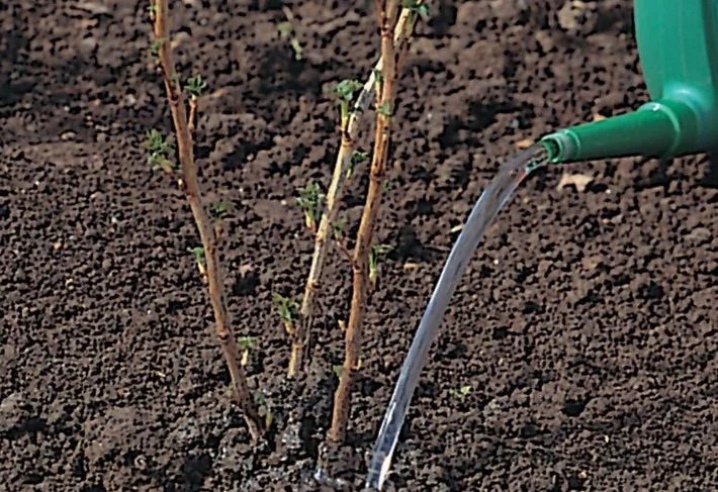
Particular attention is paid to the dosage of the components of the applied fertilizers. In situations with mineral fertilizing, it looks like this:
- superphosphates - 80 g;
- ammonium nitrate - 70 g;
- potassium supplements - 50 g.
If we are talking about organic matter, then such fertilizers must be diluted with water in the ratio:
- cow dung - 1: 4;
- bird droppings - 1: 12.
Even though red currants tolerate hot weather well enough, they require regular watering. This is especially true for young animals. Humidification is generally not required after a snowy winter.
In the absence of a sufficient amount of snow, the plants will have to be watered periodically, and best of all with warm water. It is important that moisture does not get on the leaves during irrigation.
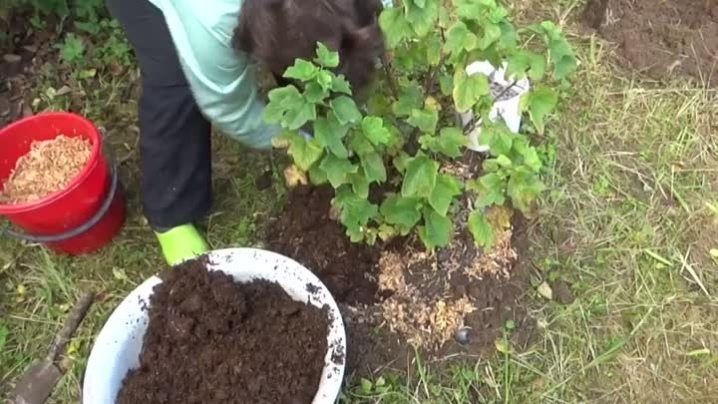
Particular attention should be paid to the fact that the soil should be soaked to a depth of 0.4 m. In the autumn months, with insignificant precipitation, 1 bucket of water will be enough for each bush. Such watering is successfully combined with plant feeding.
Summing up, it should be noted once again that the propagation of red currants by cuttings is a rather simple process. All the necessary activities can be carried out regardless of the season. However, the end result will directly depend on the correct implementation of all actions and the appropriate care of cuttings and young bushes at all stages. As a result, with a relatively small amount of time, you can multiply the berry and ensure a bountiful harvest.














The comment was sent successfully.